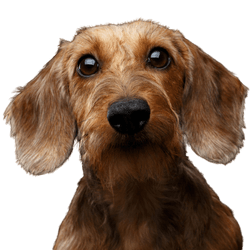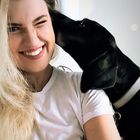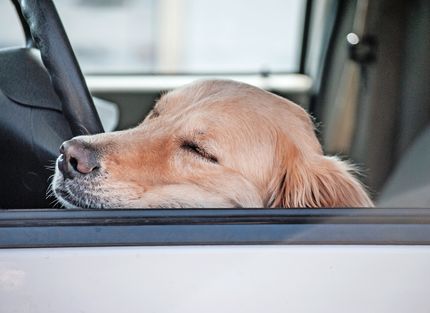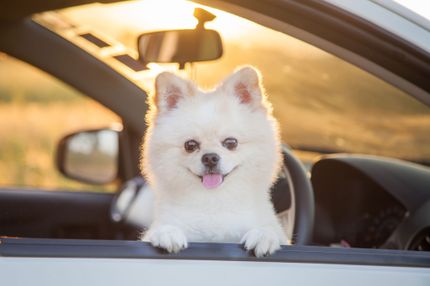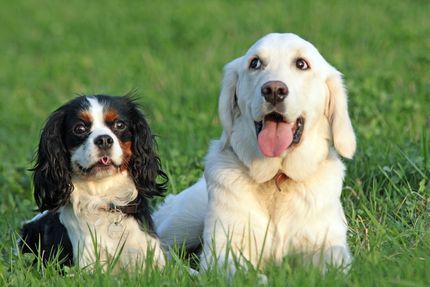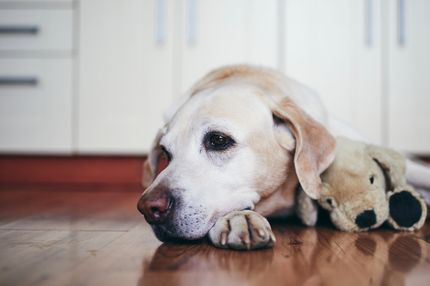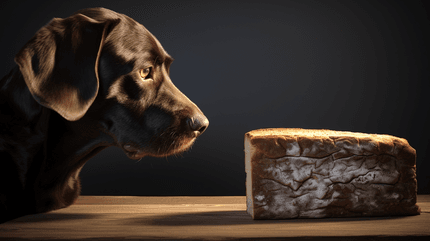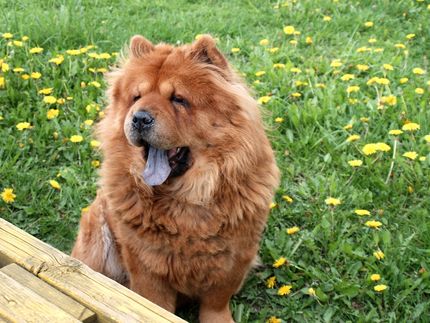Facts & Origin
Beagle and Dachshund in one
The Doxle is a cross between the Dachshund and the Beagle, two breeds with a strong hunting background. The mix arose from the desire to create a small, robust and family-friendly dog that is both playful and loyal. Both parents are independent, persistent dogs with a fine nose and strong personality, which is also evident in their mixed-breed offspring.
Selective breeding of the Doxle has gained momentum in recent decades, particularly in the USA, where hybrid breeds have become increasingly popular as everyday companions and family dogs. The Doxle often has the affectionate nature of the Dachshund and the social openness of the Beagle.
Name synonyms for the Doxle
The most common name is Doxle, a combination of "Dachshund" and "Beagle". Occasionally, the terms Beagle Dachshund Mix or, more rarely, Beaschund are also used, but they are much less established.
Criticism of the Doxle
Criticism of this hybrid breed mainly relates to the inheritance of typical characteristics of both original breeds. Both the Dachshund and the Beagle are considered intelligent, but also stubborn and motivated to hunt - characteristics that are often reinforced in the Doxle. Without clear leadership, this mix can tend to do its own thing or be difficult to retrieve.
There are also health concerns: the elongated back of the Dachshund in particular increases the risk of spinal problems - especially if the weight is not kept in check or the dog has to jump a lot.
Suitability of the Doxle
Properly trained and mentally and physically exercised, the Doxle is a loyal, playful and active family dog that bonds closely with its people. It is well suited to households with some dog experience, where it receives attention, exercise and a clear structure.
His lively, friendly nature makes him a pleasant companion - provided that neither his hunting instinct nor his independence are underestimated. The Doxle is not a classic beginner's dog, but for active owners with patience and an interest in training, it is a reliable partner with a lot of personality.
| Alternate Name | Deagle, Beackel, Beaschund |
| Origin | UK - Germany |
| Life expectancy | 10 - 16 years |
| Care requirements | low-maintenance |
| Activity level | average |
| FCI group | not recognised |
| AKC group | not recognised |
| KC group | not recognised |
More Beagle mixes
More Dachshund mixes
Attitude, character and temperament of the breed
Possible character traits of the Doxle
The Doxle usually combines the clever independence of the Dachshund with the friendly openness of the Beagle. The result is an active, curious and often very people-oriented dog that likes to get involved and is always looking for something to do.
His hunting instinct is often very pronounced - this means that he likes to sniff, follow tracks and can be difficult to call off if he has a scent in his nose. At the same time, he shows a great willingness to bond and is often very cuddly and affectionate. He loves attention, but also needs clear boundaries so that he doesn't get overexcited or display undesirable behavior - such as excessive barking or stubbornness. With loving, consistent training, the Doxle will develop into a cheerful, alert and loyal companion.
Character
Usage
Possible diseases of the Doxle
Back problems are a particular health issue - especially if the Doxle inherits the long back of the Dachshund. Herniated intervertebral discs (IVDD) are not uncommon and can be aggravated by being overweight or climbing stairs frequently.
Ear infections are also a possible problem due to the typical drooping ears - especially in humid climates or lack of ventilation. Patellar luxation, food intolerances or eye diseases can also occur. Conscious management of weight, exercise and grooming can help to reduce many of these risks.
This is what a Doxle can look like
The appearance of a Doxle varies, but is usually somewhere between a Dachshund and a Beagle. It is usually small to medium-sized, with a shoulder height of around 20 to 35 cm and a weight of between 7 and 13 kilograms.
The body can be somewhat elongated, the legs usually short to medium length. The ears are typically long and drooping, the muzzle medium-sized, often with an alert, friendly facial expression. The coat is short to medium-length, dense and easy to care for - usually in classic Beagle or Dachshund colors such as brown, black, white or tricolor.
Its overall appearance is often sporty and compact, with an alert look and a lively, always ready nature.
| Fur length | short |
| Fur | flat coated - rough-haired |
| Ear shape | Floppy Ear |
| Tail | lang - short |
| Anatomy | rugged, strong |
| Size ♀ | 17 - 38 cm |
| Weight ♀ | 7 - 10 kg |
| Size ♂ | 17 - 41 cm |
| Weight ♂ | 7 - 11 kg |
| Suitable For | - |
Known Diseases
Hypothyroidism
Hypothyroidism is a condition in dogs where the thyroid gland does not produce enough thyroid hormones. This can lead to a slowed metabolic rate, weight gain, fatigue, hair loss and other symptoms.
Epilepsy
Definition: Dog has epilepsy if, for example, at least two epileptic seizures occur more than 24 hours apart.
Eye diseases
Often occur with allergies and intolerances.
Overweight
Often, unfortunately, the dogs very much under excess weight. But the dogs themselves are never to blame!
Disc problems
Herniated disc in dogs (discopathy). Herniated discs or dachshund paralysis cause dogs severe pain.
Dachshund Paralysis
By dachshund paralysis (discopathy) veterinarians mean paralysis of the limbs in dogs.
FAQ
-
A Beagle-Dachshund mix is likely to have the short legs and body of a Dachshund with the brown, black and white colors of a Beagle.
-
Beagle-Dachshund mixes are usually friendly and energetic. They can also be quite stubborn, as both Beagles and Dachshunds can be.
-
Beagle-Dachshund mixes usually weigh between 10-12 kg. Their shoulder height is usually 35-45 cm.
-
Beagle-Dachshund mixes need regular exercise and should be taken for a daily walk or run. They also need a lot of socialization, which is why it may be necessary to take them to dog parks or dog daycare.
-
Doxles are generally healthy dogs, but they can be prone to certain health conditions such as obesity, hip dysplasia and disc disease.

